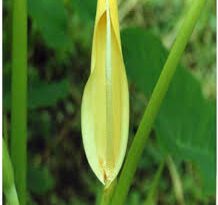Best Plantains Planting Period (PPP) for Higher Yield
Plantains can be planted throughout the rainy season. However, they should grow vigorously and without stress during the first 3 to 4 months after planting, and therefore they should not be planted during the last months of the rainy season. Planting with the first rains seems agronomically sound but not financially advantageous.
Most farmers will plant at the onset of the rains, causing the market to be flooded with bunches 9 to 12 months after planting, when prices will be very low. Planting in the middle of the rainy season is a better proposition as plantains will then be produced off-season and get high prices.
The crop grows best in moisture-rich tropical climates. The flowers develop into a bunch of plantain, which holds about five to 15 strands of the fruits. Plantains do not have a growing season and are, therefore, available year-round, especially on irrigated farmland. This makes them a reliable food source.
Although many farmers might have tried and failed, but with the necessary requirements in place, plantain cultivation business can prove to be very lucrative and easy to start-up. It is equally done in an integrated system.
Requirements of successful plantain farming include improved varieties of planting materials called suckers; soil fertility; planting spacing know-how; manure application, and most importantly, water application.
Like rice and sugarcane, plantain is a water-loving crop, and dehydration of the crop induces stunting, poor fruiting and susceptibility to drought and wasting.
Read Also: Recommended Plantain’s Climatic Requirement
Below are some of the recommended necessary procedures to ensure maximum productivity / yield from your plantain farming business:

(1) Recommended Time to Plant
According to a recent research, suckers are best planted immediately after field preparation. Plantains can be planted throughout the rainy season. However, they should grow vigorously and without water stress during the first 3 to 4 months after planting. Therefore they should not be planted during the last months of the rainy season.
Planting with the first rains or last rains may be agronomically sound but financially disadvantageous. Most farmers will plant at the onset of the rains, causing the market to be flooded with bunches 9 to 12 months after planting, when prices will be very low.
Planting with the last rains will mean more stress for the farmer as he must artificially supply water to the plants so as to maintain the optimum soil moisture content and ensure good yield.
Hence, planting in the middle of the rainy season is a better proposition as plantains will then be produced off-season and get high prices.
(2) Recommended Hole Size to Plant In
Plant holes are prepared with a minimum size of about 30 cm x 30cm x 30 cm, which is about the length of a plastic ruler. Holes can be dug with a shovel. If you are planting for fruit production it should be spaced about 8 to 10 feet.
Read Also: Plantain Fertilizer Application and Methods
(3) Recommended Process for Planting
Care should be taken to separate the topsoil from bottom soil. The sucker is placed in the hole and its corm is covered, first with the topsoil and then with the bottom soil. This is because the top soil is more fertile than the sub soil and the new sucker requires much nutrients. To supplement the fertility of the top soil, manure can be mixed with it before being placed in the hole.
In the plant hole, the side of the sucker corm which was formerly attached to the corm of its mother plant is placed against the wall of the hole. The opposite side of the sucker’ corm is placed towards the middle of the plant hole, where the soil is loose.
The best sucker (the future ratoon) will emerge at the side opposite to where the planted sucker was previously attached to the mother plant. If the land is sloping, the sucker should be so oriented that its follower will emerge against the slope. That will delay the development of the so-called high mat when the ratoon crop grows out of the soil and exposes the corm.
Read Also: The Various Products you can make from Plantain and Banana
Read Also: Why Every New Parent Needs a Baby Carrier








